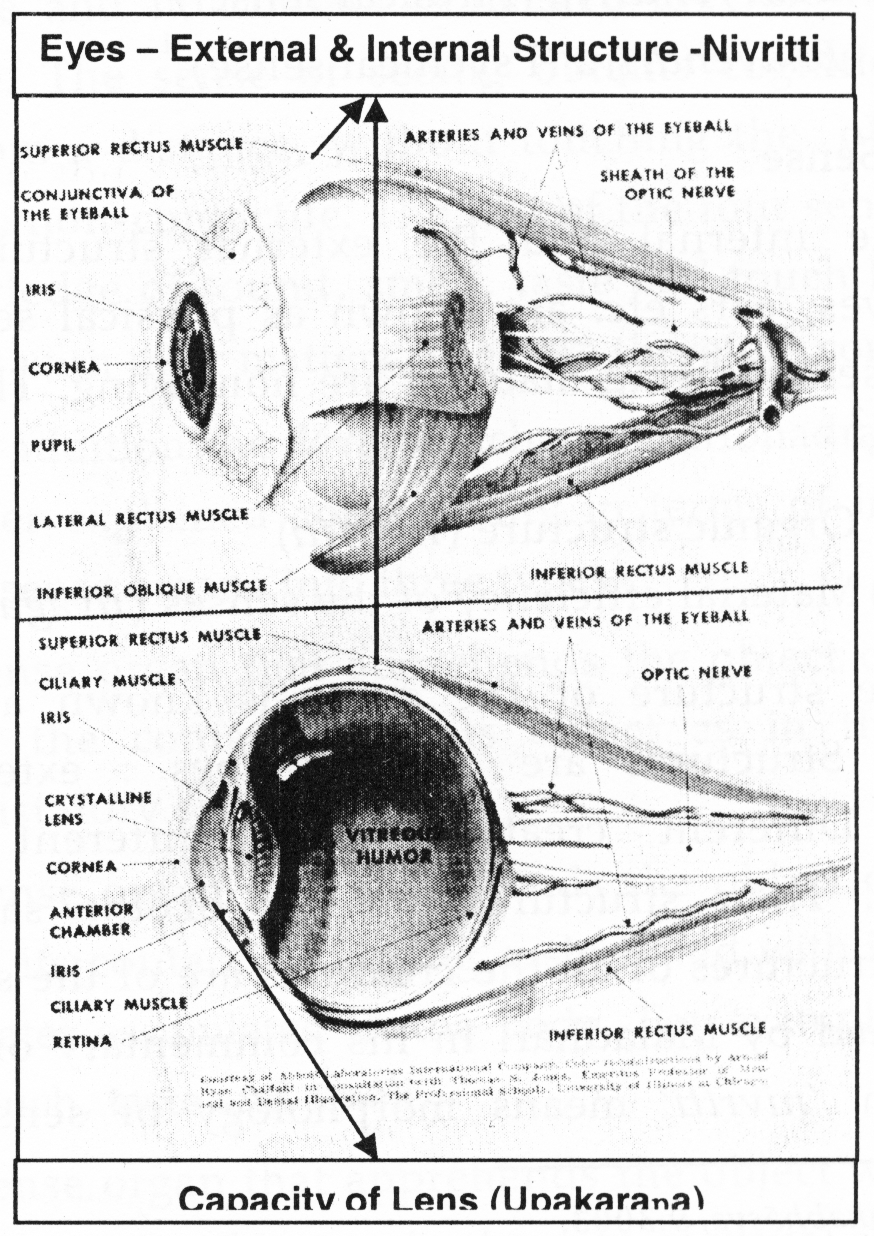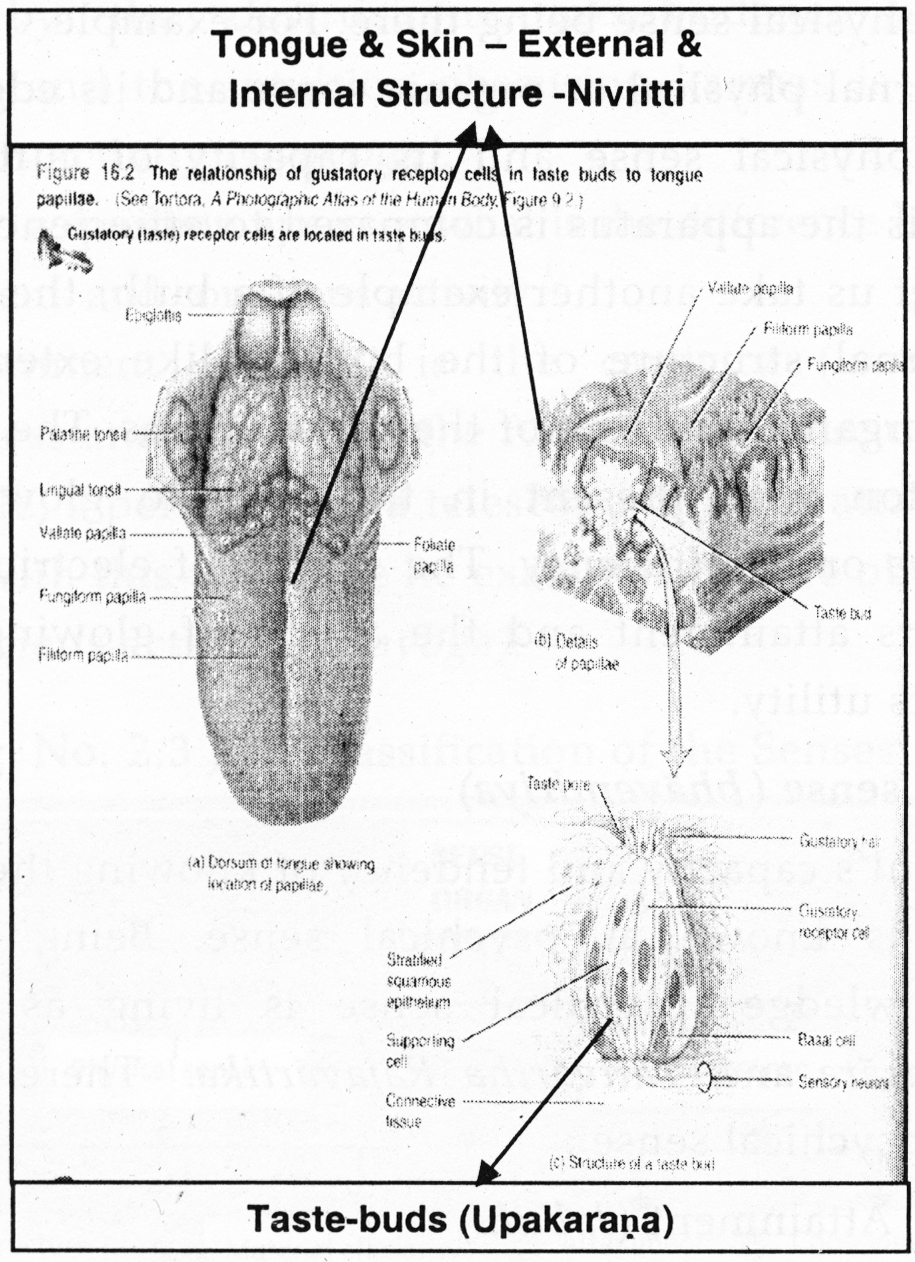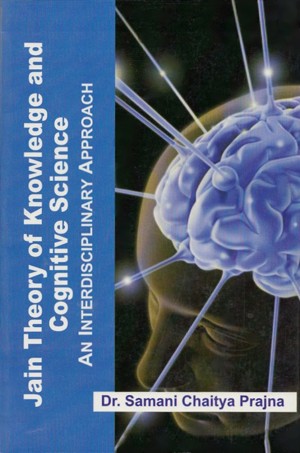
The internal structure of the sense of hearing is like the flower of neulia orientalis. The internal structure of the sense of seeing is like the grain of lentil. The internal structure of the sense of smell is like a fully bloomed flower. The internal structure of the sense of taste is like a weeding hook. The internal structure of the sense of touch is of many depending on the shape of the bodies of the creatures.[19]

The material power present in the internal structure of the sense, capable of receiving their respective objects is known as efficiency physical sense.[20] Here a question arises that what is the difference between the organic structure and other types of the senses? The answer is the shape of the sense is the organic structure and the material power that lies in receiving its object is efficiency physical sense. If the physical sense is damaged because of cough or bile or ga-s, there will be no reception of objects in spite of the internal physical sense being there. For example - sword is like external physical or organic sense and its edge is the internal physical sense and its capacity of cutting and piercing is the apparatus is compared to efficiency senses organ. Let us take another example of a bulb; the external and internal structure of the bulb is like external and internal organic structure of the sense organs. The capacity of tongston wire present in the bulb to glow is like upakaraṇa or its efficiency. The supply of electric current in it is its attainment and the action of glowing taking place is its utility.
Psychical sense (bhāvendriya)
Soul's capacity and tendency of knowing the change of state is known as psychical sense. Being imbibed with knowledge, psychical sense is living as said in Gommaṭasāra and Tattvārtha Rājavārtika[21]. There are two kinds of psychical sense:
- Attainment (labdhi)
- Conscious activity (uvaoga).
Attainment (labdhi)
The capacity of receiving the objects like touch etc. on the destruction-cum-subsidence of the knowledge-obscuring karmas and the intuition-obscuring karmas is known as attainment (labdhi)[22]
Conscious Activity Sense (uvayoga)
The tendency or the capacity of the sense organs obtained by the destruction-cum-subsidence of the knowledge and the intuition-obscuring karmas is known as conscious activity (uvayoga).
Here a question arises as what is the difference between the attainment and conscious activity.[23]
Attainment (labdhi) is the capacity (worth) of consciousness and uvayoga is the function of consciousness. For example, a person buys a telescope. It is his attainment (labdhi). With this telescope he examines remote objects. It is his conscious activity (uvayoga).
 Samani Chaitya Pragya
Samani Chaitya Pragya

